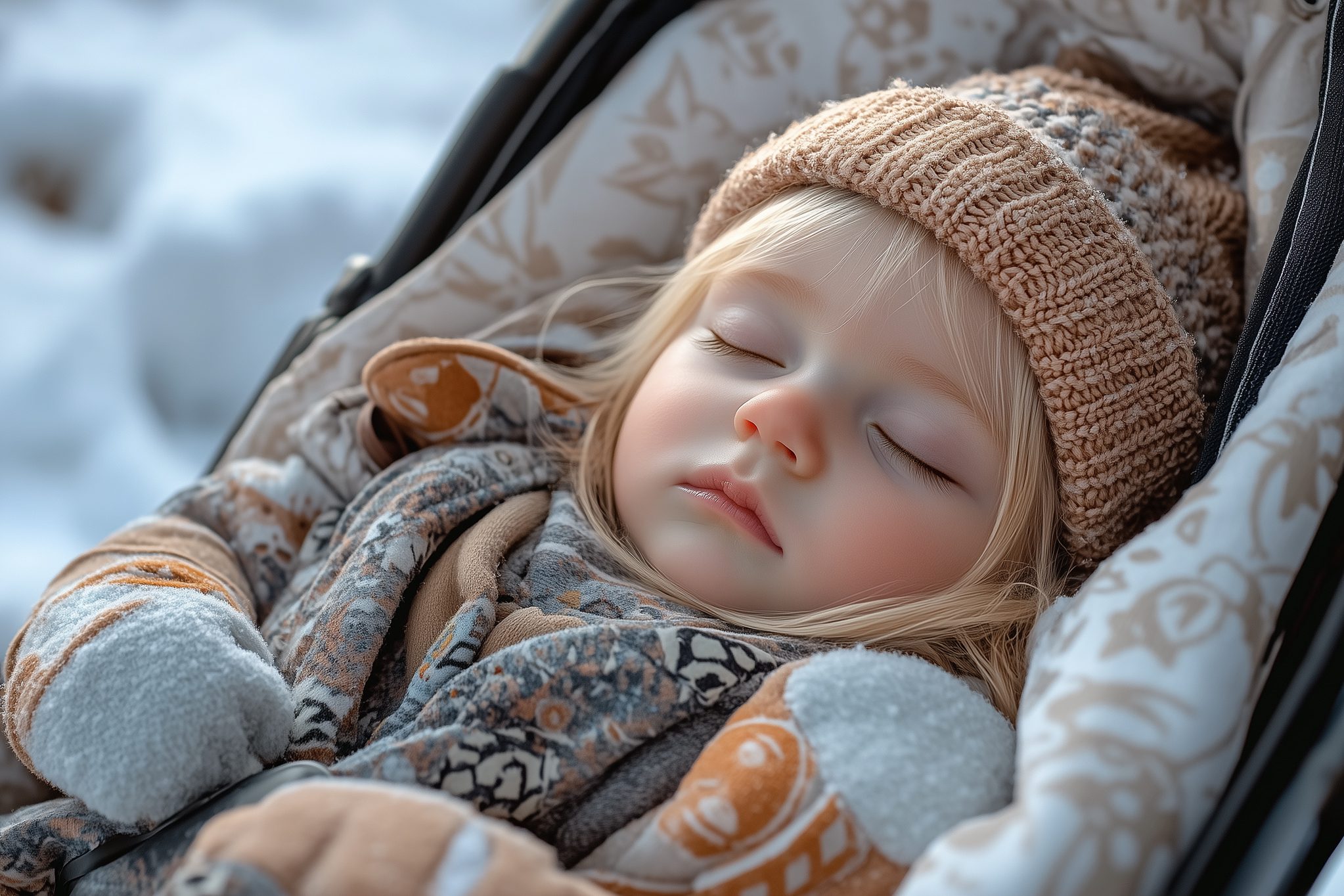
The Scandinavian Tradition of Babies Napping Outside in Winter: Benefits and Safety Tips
Discover the Scandinavian tradition of babies napping outside in winter, its health benefits, and essential safety tips.

In case you haven’t heard, one of the most fascinating trends when it comes to baby care is the practice of babies napping outside. Countries like Norway, Sweden, and other Scandinavian nations believe that babies benefit from sleeping outside in the winter, even when the temperatures are cold and it may be snowing! It sounds like a pretty crazy idea, but as you’ll come to find out in this article, it actually comes with some benefits.
We’ll explore the historical and cultural context behind this phenomenon, how it benefits babies, and some safety tips if you’d like to practice this with your infant, too. By the end of this article, you’ll know all that you need to in order to have your baby take naps outside to help their health, immunity, and even their sleep quality. But first, let’s discuss why this practice started and what its roots are.
The History Behind Babies Napping Outside in Scandinavia
While little is known about the true root of the practice, babies have been sleeping outside in Scandinavia for many centuries. Because of their northern climates, babies—as well as the rest of the family—had to grow accustomed to the winter environment, one that was often much colder than other parts of the world. Families believed that their well-being was strengthened through outdoor sleeping as long as their babies and children were secure.
Within the local communities, babies would also sleep next to one another in their own separate strollers while outdoors. The community as a whole saw the benefit of having their babies outside for naps, and it became a cultural childcare practice over time. Even today, nations like Sweden, Finland, Denmark, and Norway continue to have their children sleep outside in the cold during the winter. The reason for this is not only cultural but also due to the health benefits that they experience as a result.
The Health Benefits of Babies Napping Outside
Many people might immediately think that putting children outside to sleep in infancy is terrible for their health, but you might be surprised to find out that there are a number of benefits to this practice. Let’s explore each of these benefits in-depth and what it means for the babies napping outside in the winter:
- Improved Sleep Quality: Despite the cold temperatures, babies who nap outside actually sleep for longer and enjoy deeper sleep, according to studies. This can be helpful for their overall development, and since this is commonly a daily practice in the winter, it can help keep their sleep schedule regular, too!
- Boosted Immune System: Because of the baby’s exposure to the outside world and colder temperatures, they also have improved immunity. This is something that all Danish people believe fervently—that fresh air, specifically cold, fresh air—is wonderful for their children’s health. When they nap outside, they are also exposed to less indoor germs, which means that they stay healthier.
- Enhanced Physical Health: As you can imagine, the combination of improved sleep quality and boosted immunity leads to improved physical health. Additionally, because of the temperatures, babies enjoy improved blood circulation and get more sunlight exposure, all of which help their health and circadian rhythm stay regular.
- Better Mental Well-Being: When babies nap outside, they are also exposed to environments that can improve their mental well-being. The natural environment can calm them down while also reducing parental stress, as this is a communal activity that all parents take part in. It’s a highly beneficial practice for mom and baby!
Tips to Ensure Your Baby Naps Outside Safely
Even with all of these benefits, you have to find ways to ensure that you are safe while napping outside in the winter. The most important thing is ensuring that your baby is not too cold. If you bundle them up in warm blankets, they will be protected from the cold. However, you also should ensure that the temperature doesn’t drop too low. Most parents were able to have their babies nap comfortably at around 0 degrees Celsius or 32 degrees Fahrenheit.
Additionally, you might want to have a proper baby monitor to watch over them. Regularly check in on them and make sure that they are comfortable. You should only let them nap for a brief period of time and ensure that your little one is visible to you at all times. Having the right stroller also helps, as you want to make sure that your baby is sheltered, protected, and enjoying a restful sleep on a flat surface away from ice or icicles.
How Can I Train My Baby to Nap Outdoors?
In Scandinavian countries, they start their baby’s naps at two weeks old, and they enjoy them once per day in the winter. It’s essential to start out gradually and to see how your baby responds to the naps. If you can, try to find other parents who also want to engage in the same practice so you can start a group of babies that nap together, which will also make it easier for you to watch over your child and take part in a brief moment of self-care.
When in doubt, always do what is best for your baby. That means avoiding outdoor naps if you think that it is unsafe and also listening to your baby. Some babies will not do well with outdoor naps, so you should be mindful of this and also talk to your primary care provider to see what they think about the practice and if it is suitable for your baby.
Will You Try Encouraging More Outdoor Winter Naps for Your Baby?
While the practice may be widespread in Scandinavia, it’s up to you if you want to encourage the same ritual with your baby. There are so many benefits to napping outside, so it’s up to you! We hope that this article taught you something new. Will you try outdoor naps with your baby this winter?

Written by
Marie Soukup
Marie Soukup is a seasoned copywriter, editor, and Integrative Nutrition Health Coach with a certificate from the Institute of Integrative Nutrition (IIN). With years of experience working with brands across diverse industries, Marie is passionate about holistic health and crafting compelling content.
Download Pillow
Get help
Press & News
Legal
Connect
X (Twitter)
Company
Copyright © Neybox Digital Ltd.


